The Old Testament
The Old Testament contains 5 majors sections: the Pentateuch, the Historical Books, Biblical Novellas, the Wisdom Literature and Psalms, and the Prophets. Altogether these books tell the story of
* God creating the world and establishing a relationship with the family of Abraham,
* The migration of the Israelites from Egypt to Canaan to exile in Mesopotamia and back to Canaan
* The laws governing the lives of the people
* The worship and prayer of the Israelites
* Prophetic oracles reminding the people of their covenant with God and foretelling a brighter future.
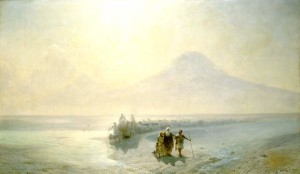
Pentateuch
The first five books of the bible are known as the Pentateuch (“five scrolls”). They’re also referred to by their Hebrew name Torah (“law” or “instruction”) since most of these books are comprised of laws for the Israelites to follow. The Pentateuch is truly the heart of the Old Testament, and all later books will look back to these five as their foundation.
The Book of Genesis describes the origins of the world and of the nation of Israel. The first 11 chapters are known as the Primeval History, which contains stories set in a mythical past and use symbolic language to communicate important truths about God and humanity. God created the world as inherently good and endowed human beings with His image, yet human beings continually sinned against God through disobedience, murder, and a host of other crimes. God punished the people with a flood but nevertheless promised to let the human race continue, encouraging them to be fruitful and multiply.
The other major section of Genesis (chapters 12-50) recounts the lives of the patriarchs and matriarchs, the founders of Israel. God chooses Abraham to have a special relationship with and promises him many descendants and the fertile land of Canaan (modern-day Israel). Henceforth, the related themes of Promised Land (Israel) and Chosen People (the Israelites) will be dominant themes throughout the Old Testament. God renews these promises with Abraham’s son Isaac and his son Jacob. The patriarchs and their wives (the matriarchs) often struggle to have children, but through God’s miraculous intervention, they become fertile, and Jacob’s 12 sons eventually give rise to the 12 tribes of Israel.
Famine in Canaan forces the family of Jacob to move to Egypt, where Jacob’s son Joseph has become very influential. The family stays there for several generations and becomes exceedingly numerous, causing the rulers of Egypt to worry. In the Book of Exodus, a cruel pharaoh decides to enslave these people, now known as the “Israelites.” The people cry out to God in their distress, and God instructs Moses to save them. He’s initially reluctant to do so, but eventually he brings his brother Aaron to confront the pharaoh and free the Israelites out of Egypt. Pharaoh refuses multiple times to let them go, and God responds with 10 plagues that terrorize the Egyptian countryside. After the angel of death strikes down the firstborn sons in Egypt while passing over the Israelites households (hence the origin of the feast of “Passover”), Pharaoh sends the Israelites away but quickly changes his mind and pursues them. A dramatic scene takes place at the Sea of Reeds (a smaller body of water north of the Red Sea), and the Israelites escape by crossing over on dry land just before the waters of the sea collapse on the Egyptian army.
The Israelites make their way to Mount Sinai, where God forms a new covenant with them. The heart of this covenant is the 10 commandments, although it contains additional laws governing Israelite society and worship. Most of these laws can be found in the Books of Exodus, Leviticus, Numbers, and Deuteronomy. These last two books also describe the Israelites’ wandering through the wilderness for 40 years and their preparation for returning to the land of Canaan.
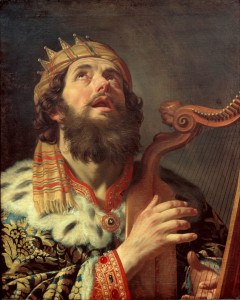
“Historical Books”
The story of the Israelites continues in the “Historical Books.” This label is a bit misleading since these books aren’t exactly historical, at least not in the way we use that term. They recount past events from roughly 1200 to 400 BC, but they embellish a few things. For example, the Book of Joshua exaggerates how easily the Israelites took over the land of Canaan, whereas the Book of Judges paints a more accurate portrait of how difficult the conquest was. Overall, they’re pretty reliable historically, but readers need to be careful that some of the details aren’t exactly right.
After wandering in the wilderness for 40 years, Moses and the original Israelites who escaped Egypt have died, leaving the next generation to enter the Promised Land. Led by Moses’ successor Joshua, the Israelites cross over the Jordan River from the east and conquer the various peoples living in Canaan. The Book of Joshua depicts them defeating one city after another easily, with the most famous battle taking place at Jericho. The Book of Judges, however, admits that the Israelites won some battles but did not completely conquer the Canaanites, who remained living alongside them in the land. After Joshua dies, the Israelites are ruled by various judges, such as Gideon, Deborah, and Samson. Once again, the term “judges” is misleading. Like their counterparts today, the biblical judges heard cases and resolved disputes, but their main duty was to lead the people in battle and liberate them from their enemies (usually the Philistines).
The quality of the judges’ leadership diminishes over time, and the people request to have a king appointed over them. God is unhappy with their request but reluctantly grants it, choosing Saul as their first king in 1 Samuel. Saul proves to be an unqualified ruler by making multiple mistakes, so God decides to appoint a new king and instructs the prophet Samuel to anoint David instead. After a period of internal strife, Saul is killed while fighting the Philistines, and David becomes king over all of Israel. During his reign (recounted in 2 Samuel) as well as that of his son Solomon (1 Kings), Israel reaches its greatest height politically and economically.
Unfortunately Solomon goes astray, worshiping foreign gods and ruling his people harshly. After he dies the kingdom of Israel breaks into two, with the 10 northern tribes keeping the name “Israel” and the 2 southern tribes adopting the name “Judah.” The two kingdoms will remain separate forevermore, never again to be reunited.
Eventually foreign powers invade Israel and Judah for the next several centuries, as told in 2 Kings. First are the Assyrians, who destroy the northern kingdom in 722 BC and reduce the southern kingdom of Judah to a small state paying taxes to the Assyrian Empire. (It’s during this time that the Samaritans first come about, after the Gentiles who flood into the northern kingdom intermarry with the Israelites there and have children who are now considered racially impure.) Judah survives for another century and a half until the Babylonians take over most of the ancient Near East in 586 BC, crushing Jerusalem and the Jewish Temple in the process. Many Israelites in Judah are taken away into exile into Babylon, and this period marks the darkest in Israelite history. The prophets address the people at this time, explaining the fall of Jerusalem as punishment for their sin, reminding them to be faithful to God, and encouraging them that God will put things back the way they were.
Hope arrives with the emergence of the Persians, who take over the region in 538 BC. King Cyrus allows the Jews to return to their homeland and rebuild their cities and their Temple. (It’s at this time the Israelites start going by the name “Jews,” after their native kingdom of Judah.) Only a small portion return home, and it takes them many years to put everything back together. The Books of Ezra and Nehemiah describe the difficulties they incur as well as their eventual success in restoring their nation and their covenant with God. (1-2 Chronicles also describe these same things, beginning with the events recounted in 1 Samuel and concluding with the Persian period.)
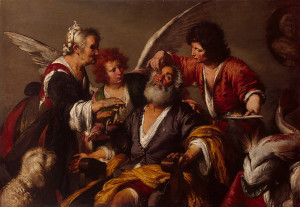
Biblical Novellas
The history of the Jewish people continues in this next section of the Old Testament, although the style of writing changes. In describing what occurs during the Persian and Greek periods, the biblical authors use the form of short stories or novellas (mini-novels). Like the “historical” books, these texts contain historical information plus some embellishment, although to put it more accurately, these novellas tell a fictional story set in a historical time period with many details that are historically accurate. (The one exception is 1-2 Maccabees. See below.) Among all the literary forms that appear in the bible, the novella comes closest to what we’d call historical fiction today, although that fact shouldn’t alarm us. The authors of these texts sought to communicate important truths about God and our relationship with Him and used a creative story to do so. They did not intend to relate purely historical events, although they did borrow some of that information in crafting their tales.
All of these novellas examine what life was like after the fall of Israel and Judah. The Book of Tobit looks back to the time of the Assyrian Exile, showing how Jews living outside of the land of Israel can remain faithful to God and prosper. Two Jewish families living in Assyria and Persia encounter much hardship as minorities living in Gentile countries, but both hold fast to their faith, and God rewards each of them in the end. Tobit’s blindness is cured, his wealth is restored, and his son Tobiah meets the woman destined to be his bride before the world was made. The Book of Judith combines the Assyrian, Babylonian, and Persian periods into one incredible story where a single woman takes down an entire empire. As the army of Nebuchadnezzar threatens to destroy the Jewish town of Bethulia, one lowly widow tricks the commander of the invading Gentile army, kills him in his sleep, and saves Israel from annihilation. The Book of Esther looks at Jewish life during the Persian period, and the focus again is on one heroic woman. Orphaned as a child, the Jewish woman Esther surprisingly becomes the new queen when she marries the King of Persia. After she learns that a Persian commander intends to exterminate her people, Esther informs the king about his plot and saves the Jews from certain death.
The Books of 1 and 2 Maccabees move onto the Greek period and describe the successful revolt of the Jews against their oppressors. These texts are more historical than the other novellas in this section, although a few elements deviate from history here and there. After the Greeks take over the nation of Israel in the 4th century BC, they introduce Greek culture to the Jews and rule over them rather peacefully. Two centuries later an over-zealous ruler named Antiochus IV comes to power and, fearing a rebellion by the Jews, begins to persecute them severely and threatens to destroy their religion. Desperate to save their nation and their cultural heritage, the family of the Maccabees rise up and lead the Jews to victory over the Greeks, ushering in a century of independence until the Romans invade in 63 BC.
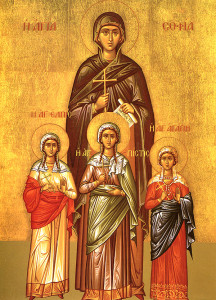
Wisdom Literature & Psalms
The rest of Jewish history in biblical times is taken up in the New Testament. The remaining books of the Old Testament are of a different type. Most of them take the form of poetry, like the Psalms, Song of Songs, and the Wisdom Literature. The word psalm means “song” in Greek, and the Book of Psalms contains 150 prayers meant to be sung to the Lord. Some are a few lines long, while others are several stanzas. There are songs of thanksgiving and praise, expressing our gratitude and wonder at the greatness of the Lord. There are songs of lament for times we feel hurt or despondent and we need to cry out to God in our anguish or distress. There are also songs for special occasions (like making a pilgrimage to Jerusalem), but by and large, these songs are pretty generic so they can be applied to various situations. In fact, many of the hymns we sing in church today have been adapted from these psalms.
Another kind of song can be found in the Song of Songs. Actually, the book represents a series of back-and-forth songs between two lovers. A husband and bride take turns extolling the beauty and wonders of one another, and occasionally a chorus of singers joins them in their celebration. This book is a great illustration of the joys of romantic love, and many view it as symbolic of the love between God and His people.
The wisdom books provide counsel on how to live, and they also wrestle with the big questions in life. The Books of Proverbs and Sirach offer short sayings that give advice about various things, mainly about how to live virtuously (e.g. Proverbs 15:1: “A gentle answer turns away wrath, but a harsh word stirs up anger.”) The Book of Ecclesiastes (also known as Qoheleth) is one of the most pessimistic books of the bible, but it also exudes a glimmer of hope. The author struggles to make sense of life since sinful people often prosper while virtuous people often suffer, yet the author affirms the goodness of God and His commandments by the end. The same problem is taken up in the Book of Job, where the holiest man imaginable suffers the greatest tragedy imaginable, losing all his property and his children. He and his friends take turns trying to understand how God could let this happen, and at the end of the book, God speaks to Job and restores his wealth and family. The Book of Wisdom is a unique text, offering advice like Proverbs and Sirach but also emphasizing the resurrection of the dead and praising God for leading the Israelites out of Egypt.
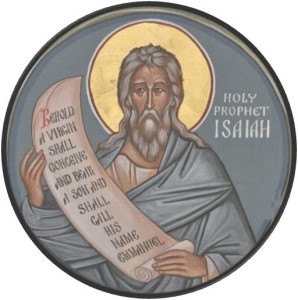
Prophets
The prophetic books are some of the most famous parts of bible. They’re also some of the most misunderstood. These books contain the oracles of more than a dozen of the most influential prophets in the bible, but they’re not the only prophets in Scripture. Beginning with Moses in the Book of Exodus, prophets have been appearing throughout the Old Testament, including illustrious figures such as Samuel and Elijah. There are even a few in the New Testament too, such as John the Baptist or Simeon. The prophets in this section of the Old Testament bridge the gap between the monarchy and the New Testament yet their words do not mark the end of the Old Testament period, nor are they merely heralds predicting the coming of Jesus. They flourish during the time of the late monarchy up to the end of the Babylonian Exile (around 500 BC), but the story of the Jewish people continues after the last of the prophetic books. The prophets have been placed at the end of the Old Testament to show how they foretell the coming of Christ in the New Testament, although that’s not their most important role. The prophets are very much concerned with the future and the coming of the messiah, but their primary function is to speak to the people in the present moment. After invading nations have conquered Israel and Judah and driven off many people into exile, the prophets remind the people that they have sinned against God and broken His covenant. Repent and turn back to the Lord, the prophets exclaim, and God will repair this relationship and put things back the way they were. In short, biblical prophets speak the word of God to the people, not only for those who lived centuries ago but for people of every generation.
The prophetic books repeat many of the same themes, and sometimes it’s hard to differentiate them from one another. There are two main divisions in this section: major prophets and minor prophets. The major prophets are the three longest books: Isaiah, Jeremiah, and Ezekiel. All three criticize the people for injustice and wrongdoing, especially by Israel’s leaders, yet all three look to a brighter future where God will lead a remnant of the people back to Israel and rebuild Jerusalem. Jeremiah also recounts his own misfortunes when he is persecuted and nearly killed by his opponents, many of whom claim to be prophets themselves and are angered by his criticisms of the Jewish leaders. The Book of Baruch is thought to be composed by Jeremiah’s secretary, and the Book of Lamentations is also linked with Jeremiah, mourning for the destruction of Jerusalem and the Temple by the Babylonians. Ezekiel is one of the strangest books, describing strange prophetic gestures (e.g eating a scroll of paper, building a model of the siege of Jerusalem) and strange visions (e.g. God seated on a glorious chariot).
The next section contains the words of the minor prophets, beginning with Hosea and ending with Malachi. They are minor not in importance but in length. These books are much shorter than Isaiah, Jeremiah, and Ezekiel, and some are only a chapter long (Obadiah). They reiterate many of the same themes above, levying some of the harshest criticism against Israel and Judah for their sins (e.g. Amos, Hosea) while offering words of comfort to a people whose way of life has been destroyed. The Book of Jonah is the most unique of these 12 texts, presenting a short (probably fictional) story of a prophet who is reluctant to speak God’s word to the Assyrians in Nineveh. Although he eventually performs his task, the book illustrates the racial tensions between Jews and Gentiles and stresses that God does not judge people based on race, so neither should we.
Also included in this section of the Old Testament is the Book of Daniel, although it doesn’t fit very well here. Daniel is not a prophetic book per se but rather an apocalyptic text. Apocalyptic literature uses highly symbolic language and describes visions of the supernatural realm in order to convey important theological truths to its audience. Such books are written during times of intense persecution by outsiders, and their main goal is to show that good will ultimately triumph over evil, even though it seems evil is winning at the moment. God has not abandoned His people but will come to the aid of the righteous and overthrow the wicked, and Daniel uses a story about Jewish exiles serving in the court of the Babylonian king to illustrate how Jews suffering at the hands of the Greek will ultimately prevail. The book is very much oriented toward the future, and it tells of a heavenly figure like a “Son of Man” coming on the clouds of heaven, much like the messiah foretold by the prophets. A descendant of David will rise up, remove the oppression imposed on the people, and bring them back to God, ruling the people justly and ushering in an age of peace.
*To learn more about individual books, check out these online video summaries.
(Note: The linked videos are from the Bible Project site, which has a slight non-denominational Protestant bias but is still quite good.)
*To learn more about the People, Places, and Passages of the Bible, visit a scholarly resource here.
